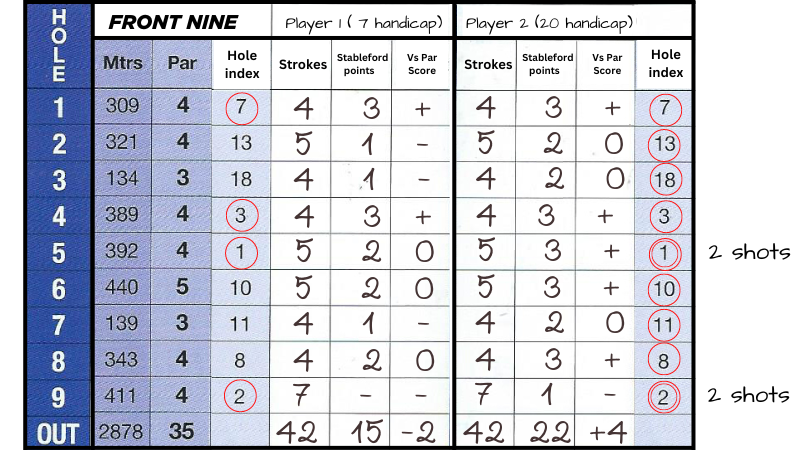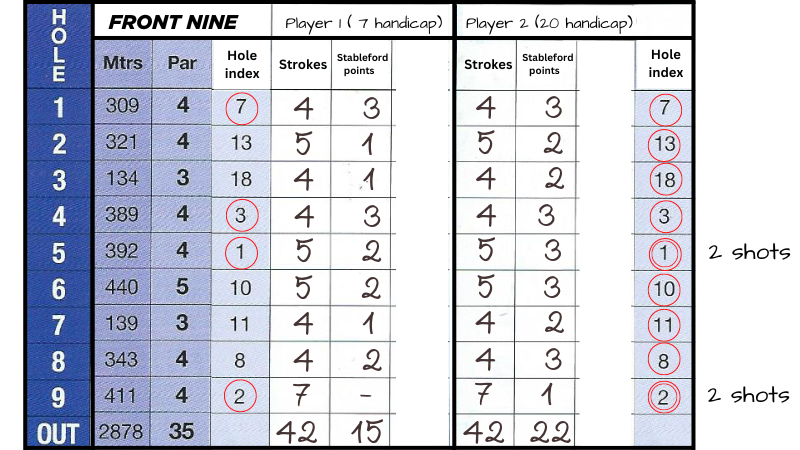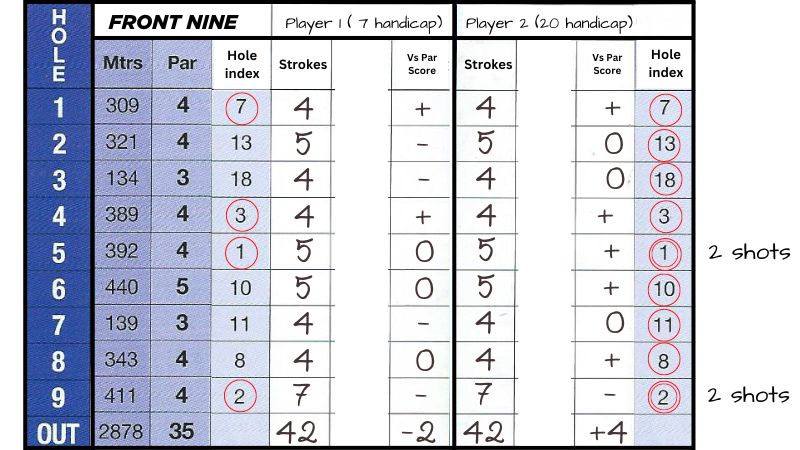Golf Basics – Your Guide to Golf Scoring formats

The Golf Beginner's Guide to Scoring
When marking your score, there are various golf scoring formats played in Australia. Here are the most common, and how they work.
Stroke
One of the simplest golf scoring formats. You simply play each golf hole, then mark the total number of strokes taken. At the end of a round, your gross score (i.e. all shots) is totalled, and your handicap is deducted to calculate the nett score. The player who completes the round with the least nett strokes is the winner.
Stableford

This is a basic points-based system, and the most common of golf scoring formats in Australia. Instead of aiming for the lowest total/nett score (as in stroke play, above), a golfer aims to accumulate the highest number of total points in a round. Points are awarded on each hole, depending on how well you score.
The points system goes like this:
- Double-bogey or higher= No points (also known as a "wipe")
- Bogey= 1 point
- Par= 2 points
- Birdie= 3 points
- Eagle=4 points
- Albatross=5 points
Let's say you are a scratch golfer (i.e. handicap of 0). If you score a par on every hole, you will end up with 36 points. (i.e. 2 points per hole x 18 holes = 36 points). If you had scored 16 pars and had two birdies, your total would be 38 points, etc.
What about players with handicaps?
As part of the World Handicap System, at nearly every course around the world, each hole is ranked 1-18 by difficulty. The hardest hole is ranked number 1, while the easiest hole is ranked 18th, etc. The ranking is called a hole's index, and they are listed on the scorecard (sometimes they are called the Hole's Handicap Index.)
Here's where it gets interesting: The index on the scorecard determines how many strokes a player receives on the hole, depending on their handicap. These strokes are like "extra shots" that give you a better chance of scoring points.
Example:
Let's say a player has a GolfLink Handicap of 5. He or she will thus get a shot on the 5 hardest holes as noted by the course scorecard (again, every course has all 18 holes "indexed" from 1 (hardest) to 18 (easiest).).
The player approaches the first hole of the day (let's say it is a par-4), and sees that it has an index of 3 (i.e. the third-hardest hole on the course). He or she thus gets a stroke on the hole. Let's say this player takes 5 shots on the hole. In stroke golf, this would be a bogey. However, in Stableford, since the player gets a stroke on the hole, their "nett" score is 4 (i.e. 5 shots minus the handicap stroke). Therefore, they have made a "nett par" and get two points.
On the scorecard, the player marks "5" for score (i.e. actual strokes), and marks 2 in the points column.
If, on that same hole, the player had taken 6 shots, then they would mark 6 for score, and 1 in points. However, If they had taken 4 shots (gross par), they would mark 4 for score, and 3 for points (nett birdie).
Par (or vs Par)

Par is similar to the stableford scoring above, in that you use the hole indexes to determine if you get a shot on a hole. However, there are only three possibile outcomes for a hole:
- Win (also called a "plus", scored as a +)
- Half (also called a "tie", scored as a 0)
- Lose (also called a "minus", scored as a -)
The stroke index on the scorecard (see Stableford, above) determines how many shots a player receives on the hole depending on their handicap. A hole is either won, lost or halved, depending on your your stroke score.
Example:
Let's say a player has a GolfLink Handicap of 5. He or she will thus get a shot on the 5 hardest holes as noted by the course scorecard (again, every course has all 18 holes "indexed" from 1 (hardest) to 18 (easiest).).
The player approaches the first hole of the day (let's say it is a par-4), and sees that it has an index of 3 (i.e. the third-hardest hole on the course). He or she thus gets a stroke on the hole. Let's say this player takes 5 shots on the hole. In Par format, since the player gets a stroke on the hole, their "nett" score is 4 (i.e. 5 shots minus the handicap stroke). Therefore, they have made a "nett par", which gives the player a 0 (i.e a Half or Tie).
On the scorecard, the player marks "5" for score (i.e. actual strokes), and marks 0 in the points column.
If, on that same hole, the player had taken 6 shots, then they would mark 6 for score, and a minus (-) in points. However, If they had taken 4 shots (gross par), they would mark 4 for score, and a plus (+) for points (nett birdie).
3 thoughts on “Golf Basics – Your Guide to Golf Scoring formats”
Comments are closed.

[…] following factors must be considered when it comes to golf scoring. A key factor is how well you perform as a group rather than just in one round. If you score poorly […]
[…] Score for Beginners, Amateurs, & Pros? What are Hole Handicaps? Score Probability Table Golf Basics – Your Guide to Golf Scoring formats Golf Games […]
[…] of your mobility challenges that communicates your need for the flag. Think of it as your golfing scorecard; each entry, a testament to the unique context of your situation. This documentation speaks on your […]